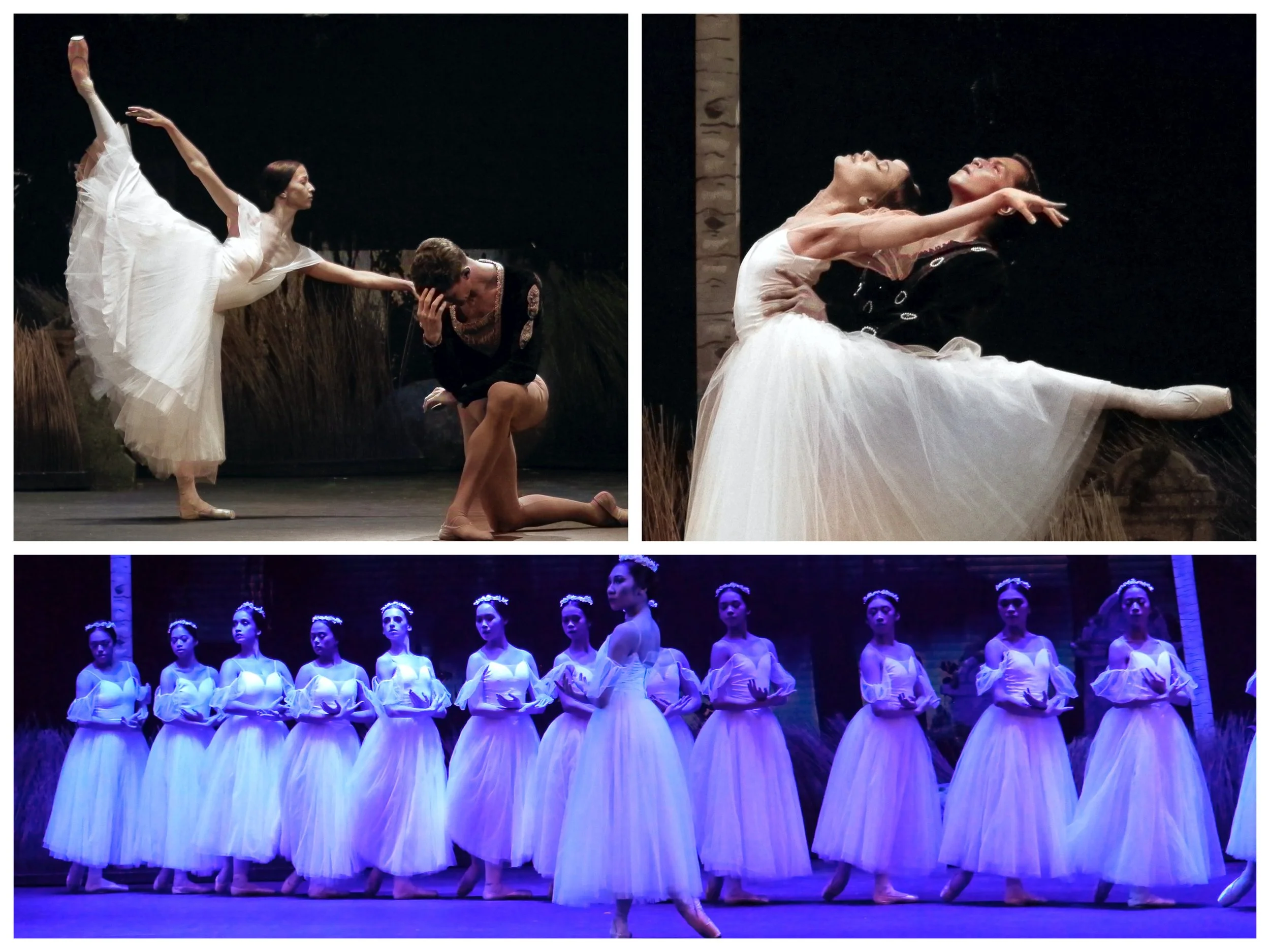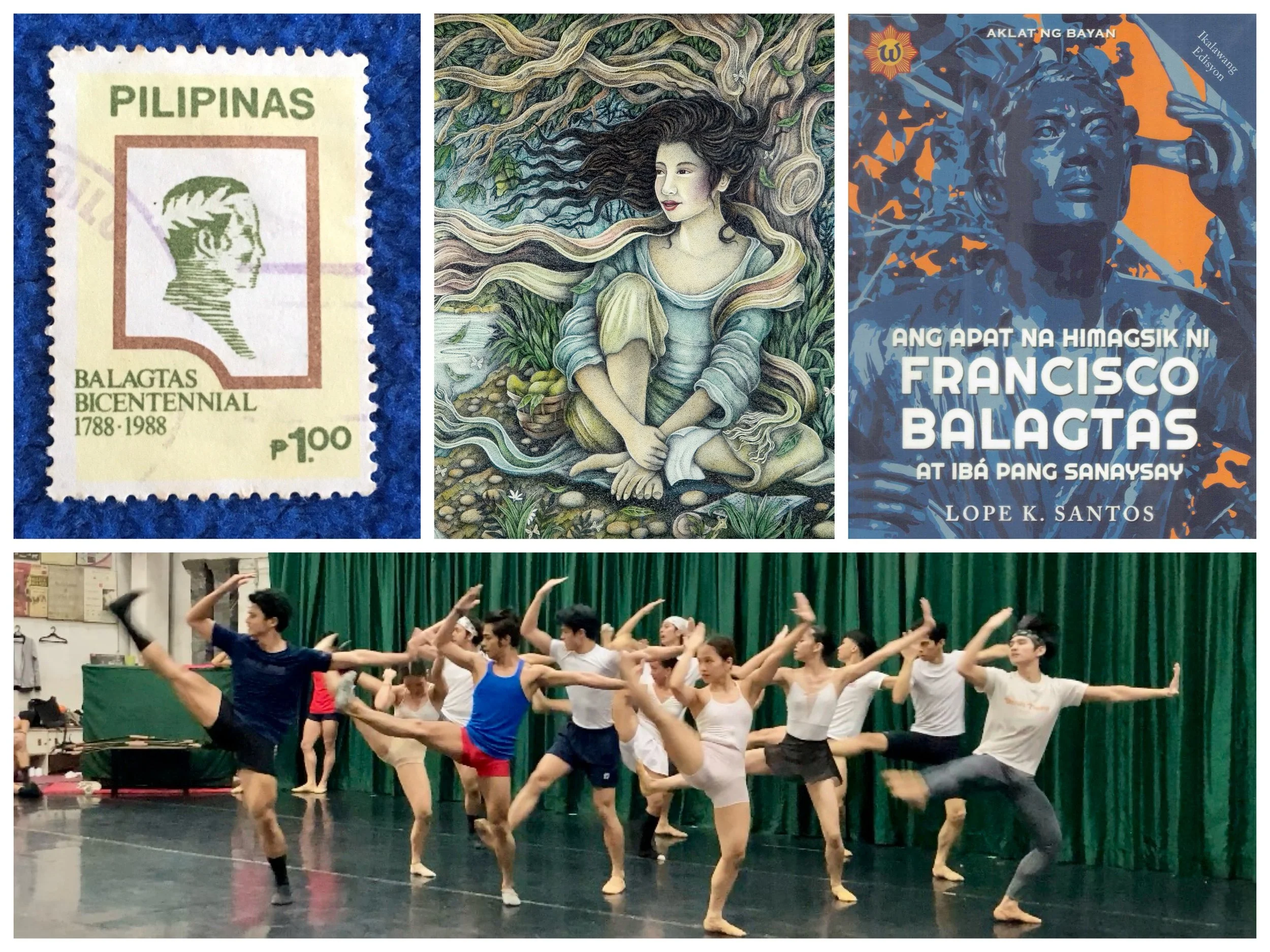More than just a love story: Why Florante at Laura is a must-read for Filipinos
The textbook edition of Florante at Laura from Adarna House features annotations by National Artist for Literature Virgilio Almario.
Ballet Manila unveils its adaptation of the literary classic Florante at Laura on October 12, 13 and 19 at Aliw Theater, with the choreography of Gerardo Francisco Jr. and Martin Lawrance, the music of National Artist Ryan Cayabyab and the artistic direction of Lisa Macuja Elizalde.
To usher in this world premiere, balletmanilaarchives.com is running a series of articles about the Francisco Balagtas masterpiece to give context to the story and its characters and to underscore its continuing relevance today, almost two centuries after it was first published. The series is written by Michael M. Coroza, PhD, who served as consultant to the production. He is a full professor and former chair of the Department of Filipino, School of Humanities, Ateneo De Manila University, and is also chairman of the Unyon ng mga Manunulat sa Pilipinas (UMPIL).
By Michael M. Coroza
(First of a series)
Florante at Laura by Francisco Balagtas, a canonical Philippine literary text, is a staple of Filipino high school education, typically read in the second year. Despite being set in the kingdom of Albania, with princes and princesses as the main characters, the narrative is believed to reflect the colonial situation of the Philippines at the time of its creation in 1838.
Taking on the title roles in Ballet Manila’s Florante at Laura, principal dancers Joshua Enciso and Abigail Oliveiro rehearse a pas de deux from the company’s adaptation of Francisco Balagtas’ epic poem. Photo by Giselle P. Kasilag
Like any of the world’s great works of literature, it presents an in-depth analysis of the cause and effect of the complex social and political relationships that often lead to disastrous conflicts and denigrate human dignity. In the battle between Florante and his archenemy Adolfo, or between Aladin and his cruel father Sultan Ali-Adab, which results from envy and greed, the problems humanity has faced, is facing, and will face can be reflected.
Though Balagtas’ work may have been based on the Filipino colonial experience in the 19th century, what he discusses is universal and timeless. His masterpiece always has a profound philosophical and moral effect on its readers, inspiring and enlightening them, from the great heroes like Jose Rizal, Andres Bonifacio, and Apolinario Mabini of the late 19th century to anyone with a critical awareness today.
Florante is only seventeen when King Linceo appoints him the army’s General who would liberate the kingdom of Crotona, where his late mother Floresca was a princess. His father, Duke Briceo, requests the King to include him in the army as a soldier. But, as soon as Linceo sees Florante, he is immediately made a general. Let us return to this scene in stanzas 266 to 270 of the poem. Florante narrates while Aladin listens:
Florante is not appointed as general because of experience or several successful battles, nor because he is the top student in Atenas. Instead, the King’s basis for appointing him is a dream. It is not realistic for our time. But it should be noted that for the consciousness that prevails in this poem by Balagtas, dreams are a way for God or any divine power to communicate with people. Florante’s ascension to generalship is not just a stroke of luck but a destiny ordained by the divine. He is ‘destined’ to be the protectorate and King of Albania. Throughout the narrative, Florante is shielded by the forces of nature, ensuring that no peril can thwart the fulfillment of his destiny. The interventions of Menalipo and Menandro, who come to his aid when he is on the brink of death, are not mere coincidences but a testament to the constant presence of a higher power in his life. That is why, no matter what Adolfo does, Florante always emerges victorious and virtuous, even in matters of love with Laura.
Francisco Balagtas presents an in-depth analysis of the cause and effect of the complex social and political relationships that often lead to disastrous conflicts and denigrate human dignity. Sa Babasa Nito painting by Janice Liuson Young; Photo by Harvey Tapan, from Florante at Laura UP Centennial Edition
It’s not just a “love at first sight” case between Florante and Laura. Their love is not just destined but inevitable, with no obstacle capable of standing in its way. As Florante is destined to be the King of Albania, Laura, the sole heir of King Linceo, is fated to love and marry him. Like the unyielding force of nature, this inevitability drives Count Adolfo, who harbors ambitions of kingship, to also covet Laura. The kingdom and Laura are intertwined, if not identical, things that Florante and Adolfo are fighting over.
In Adolfo’s pursuit and effort to claim the kingdom and Laura, the main point of Balagtas’ remarkable work is fully exposed. It proclaims that the root of all the world’s troubles is the failure to accept divine destiny. Florante himself says in stanza 19:
When Florante becomes the hero of Albania and the love of Laura's heart, Adolfo's jealousy intensifies. So, he does everything he can to seize power by inciting the people to rebel against King Linceo. He convinces the people to overthrow and behead King Linceo, Duke Briceo, and all the ministers in the palace, so he can be installed as the new King. It is a power grab that is the ultimate cause of evil. Because of this, the people seeking relief are further destroyed because Heaven did not ordain their new leader. The gullibility of the people is the reason for its serious destruction.
If one finds this intriguing or thinks it can be related to significant historical events, then there is more reason to consider reading and re-reading Balagtas masterpiece. He may have already provided insights into how to deal with many of our current socio-political problems.
Maraming Pagtingin by sculptor Juan Sajid Imao underscores how Balagtas’ masterpiece can inspire and enlighten readers including heroes like Jose Rizal, Andres Bonifacio and Apolinario Mabini. Photo by Harvey Tapan, from Florante at Laura UP Centennial Edition






